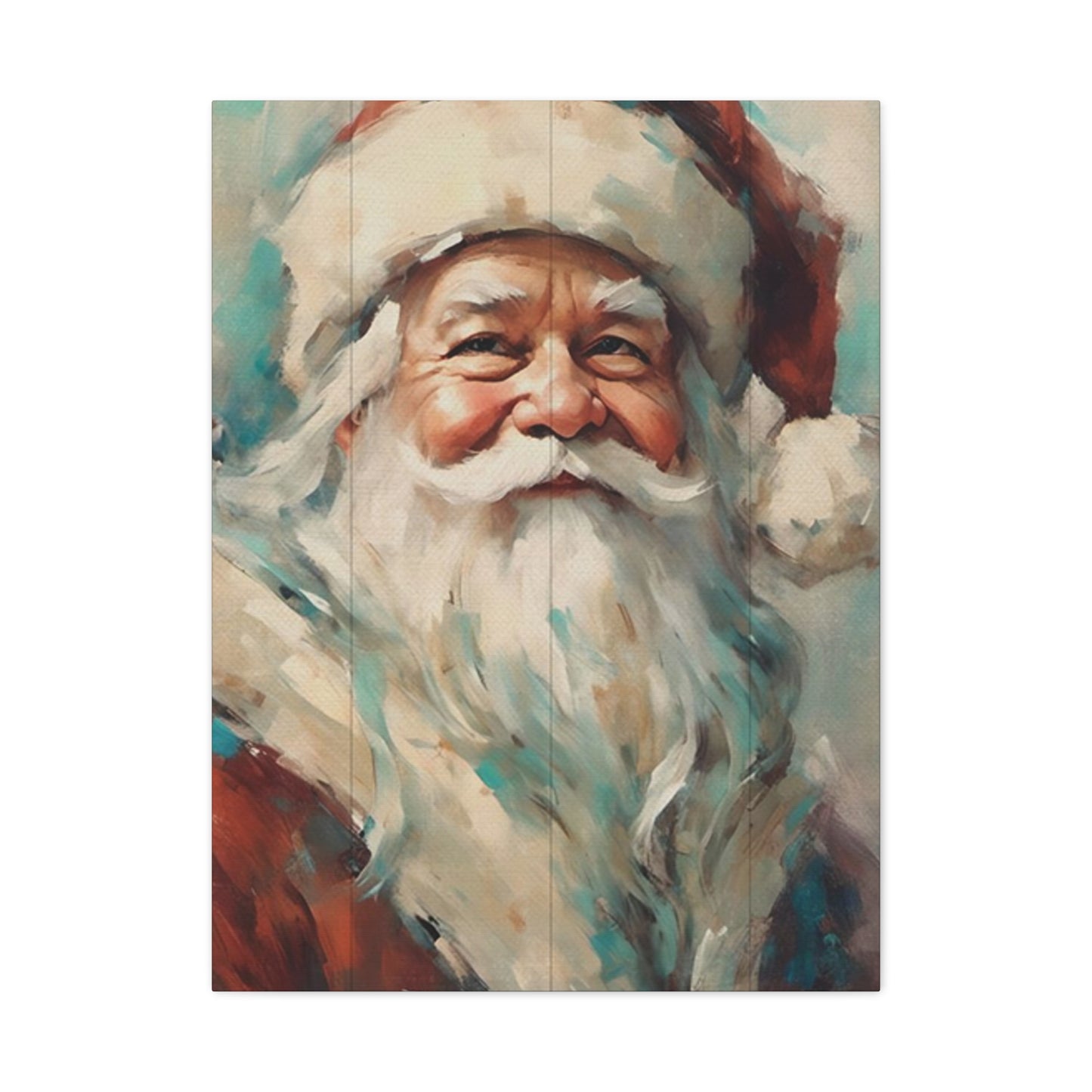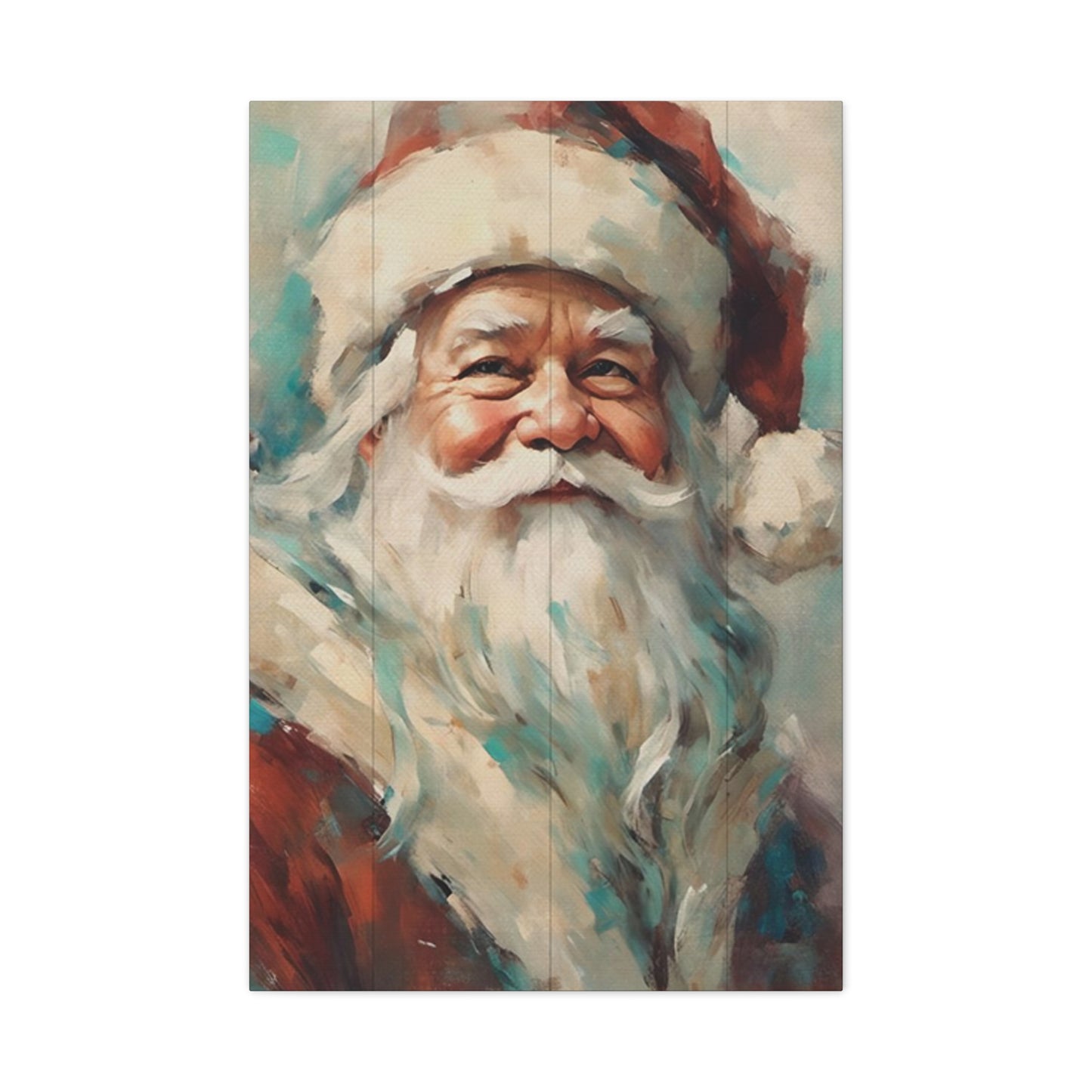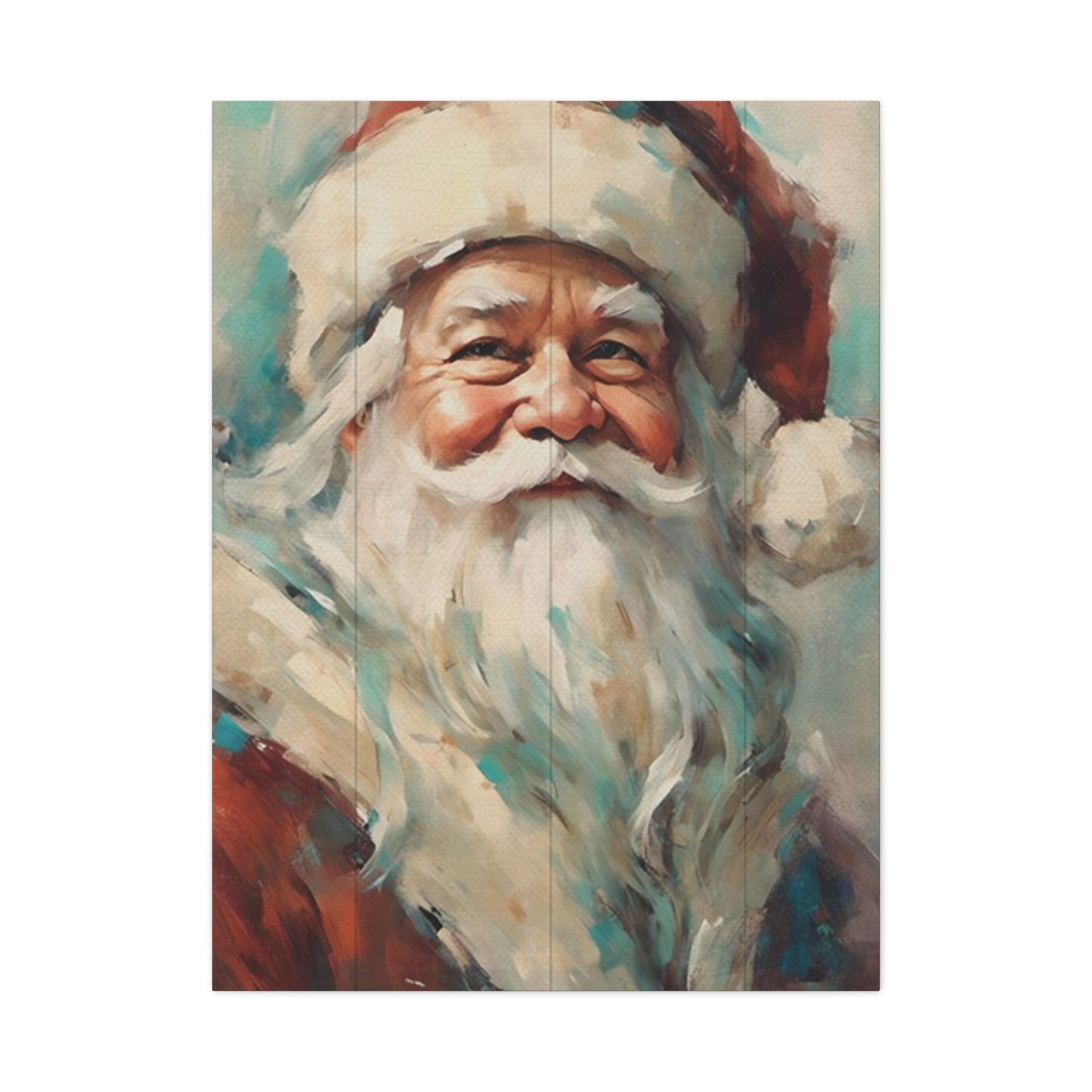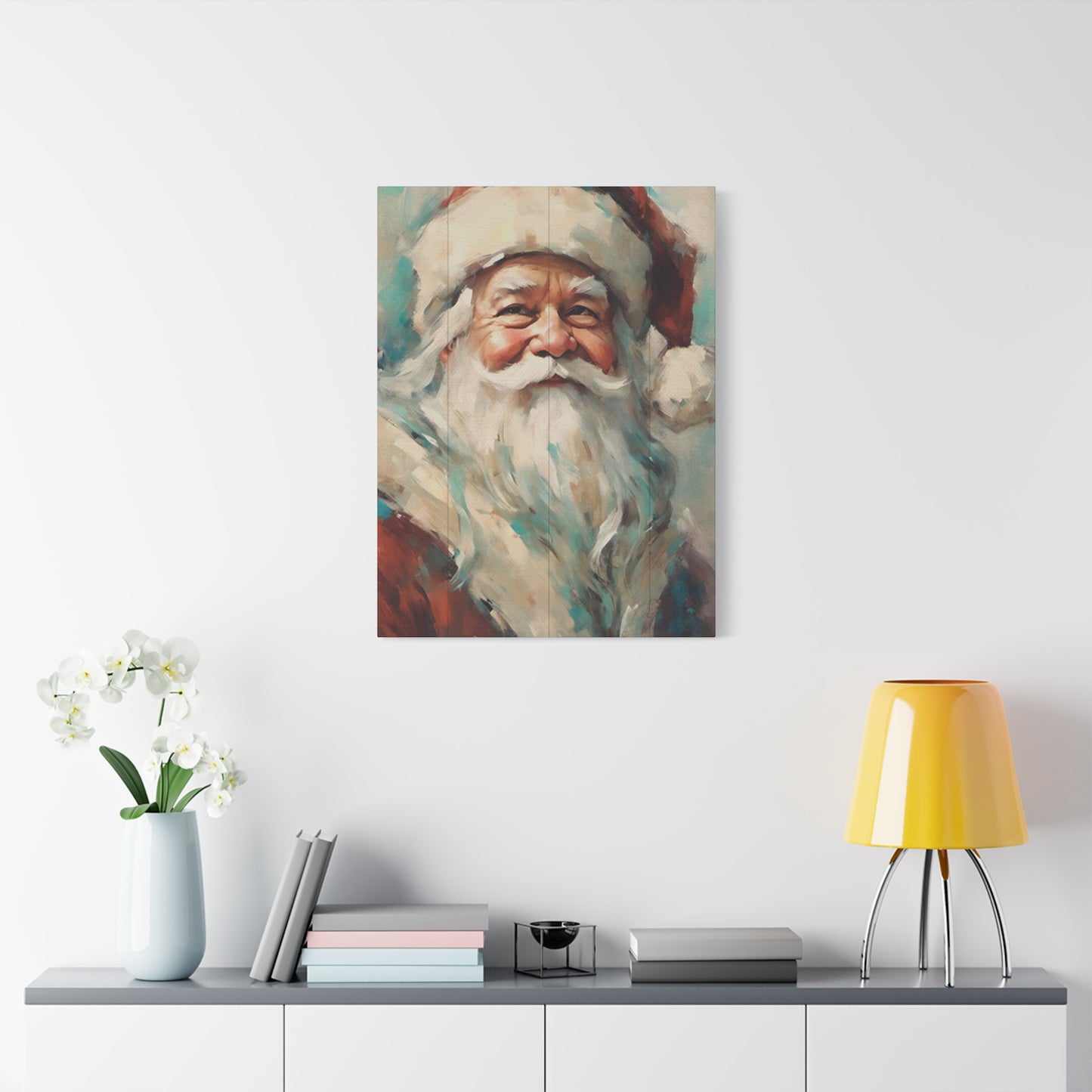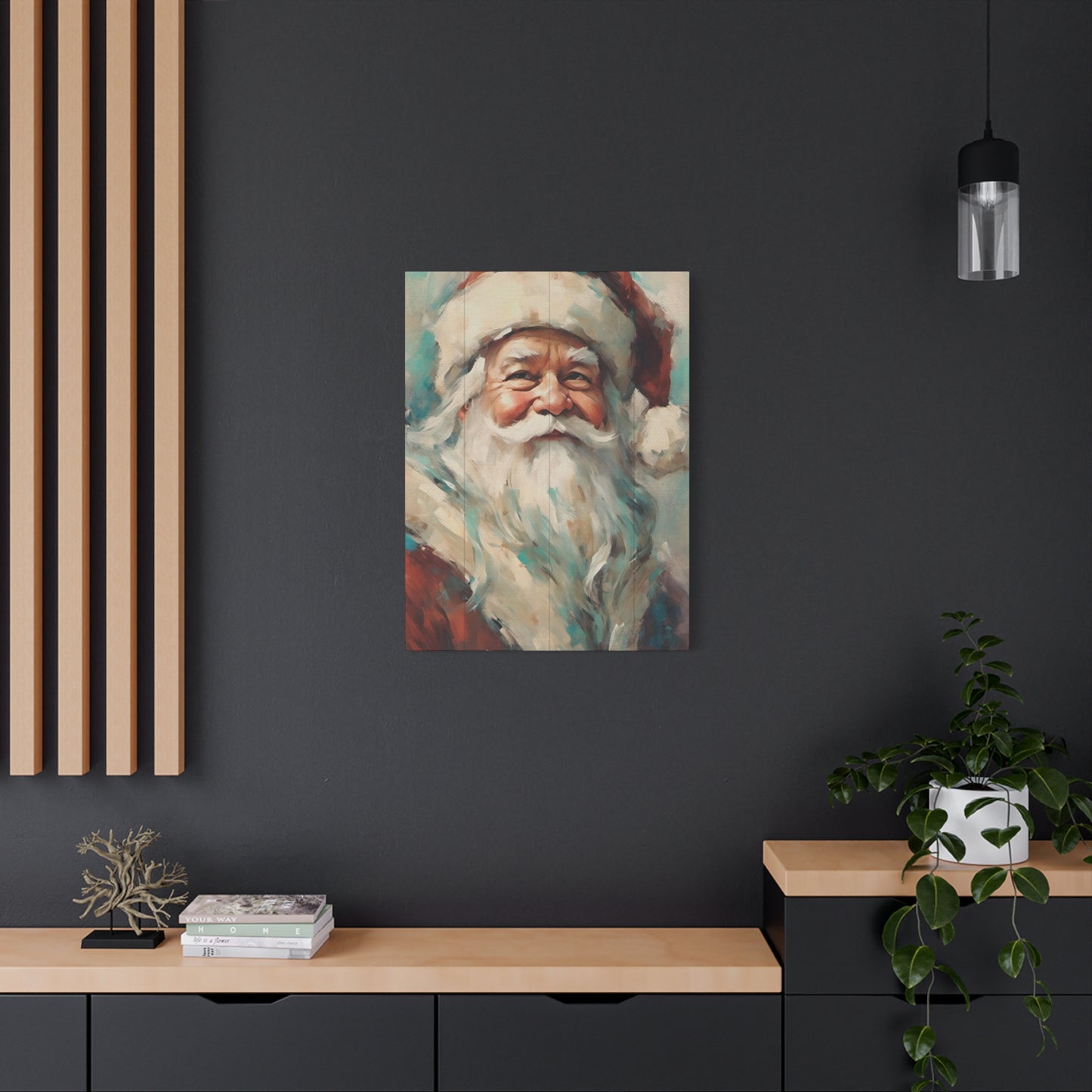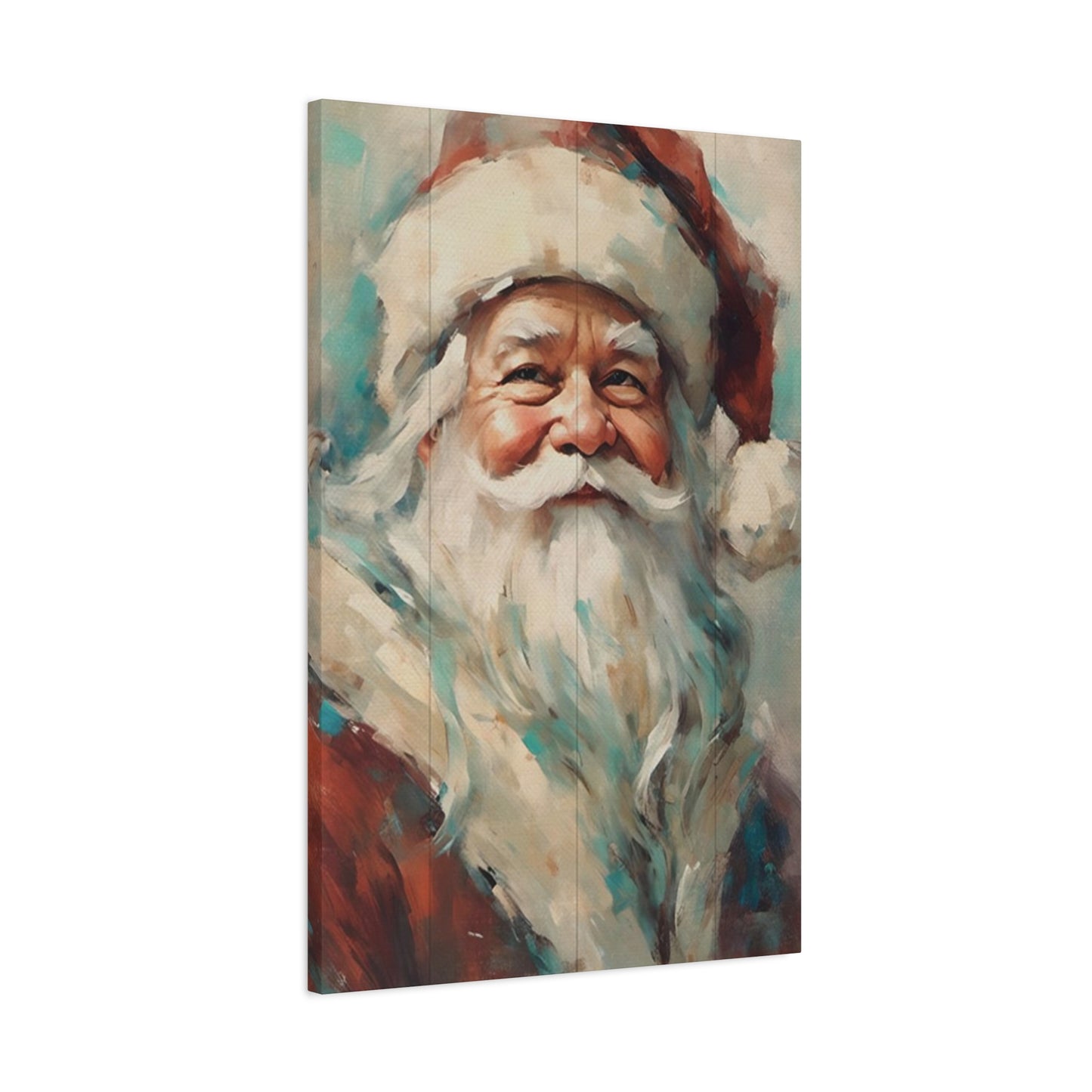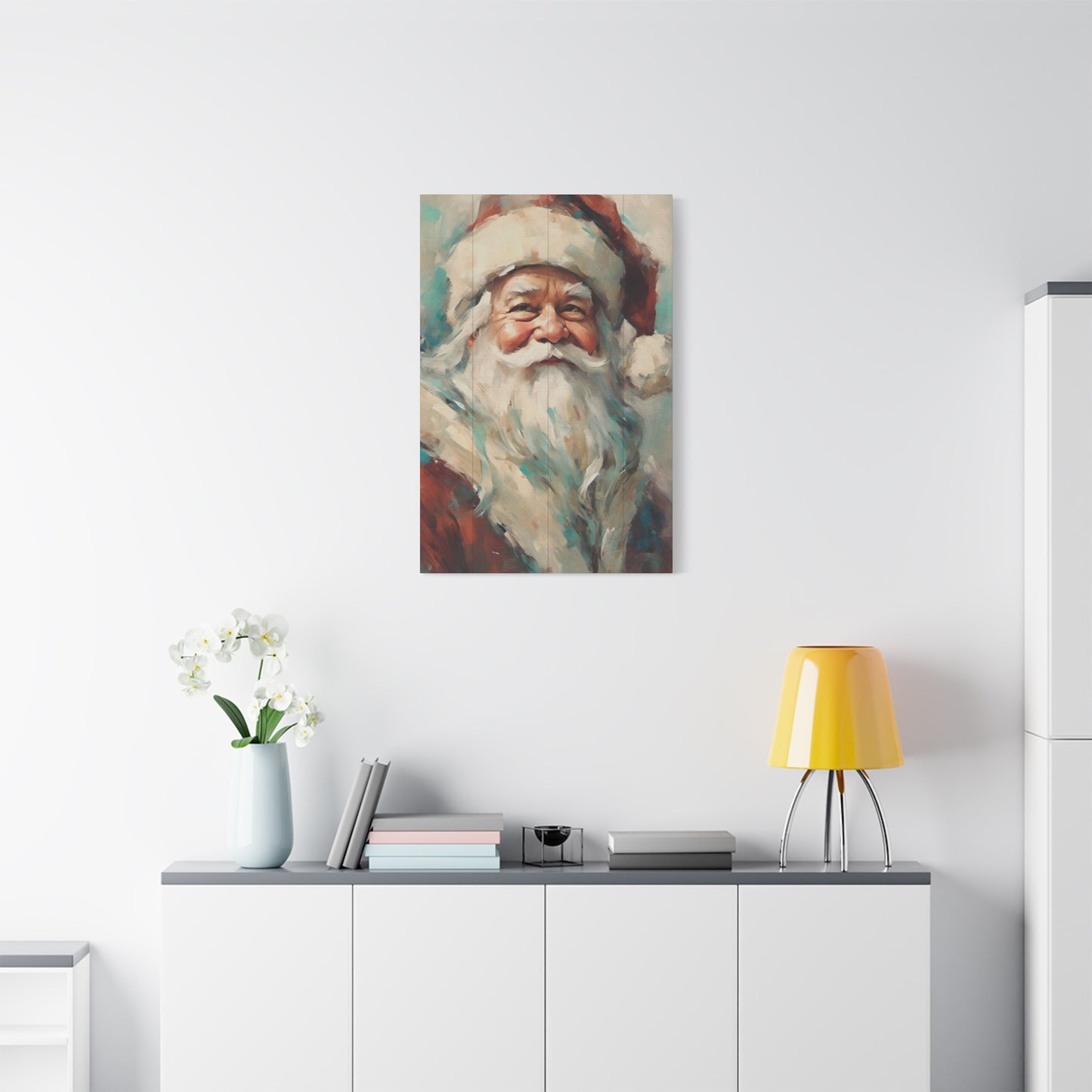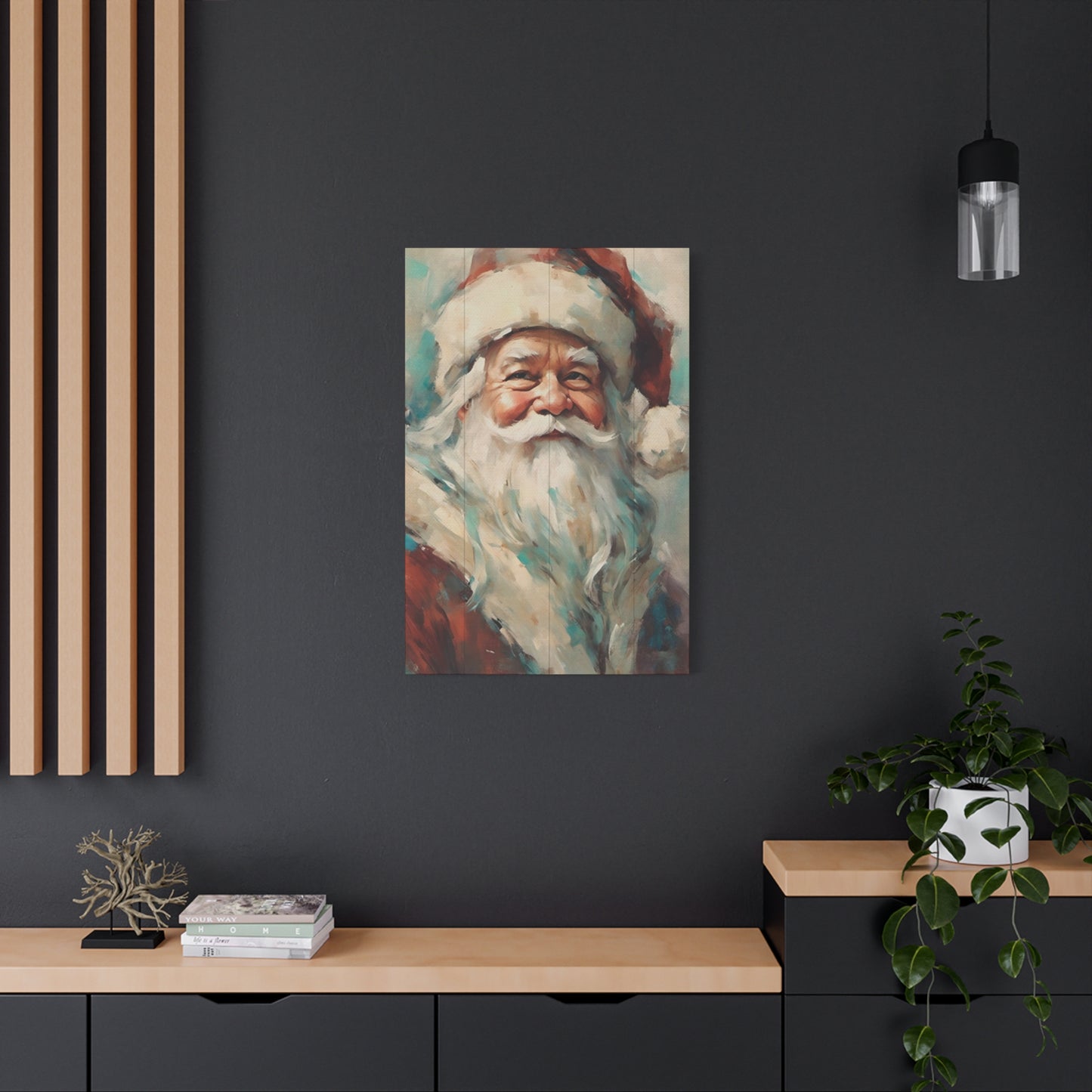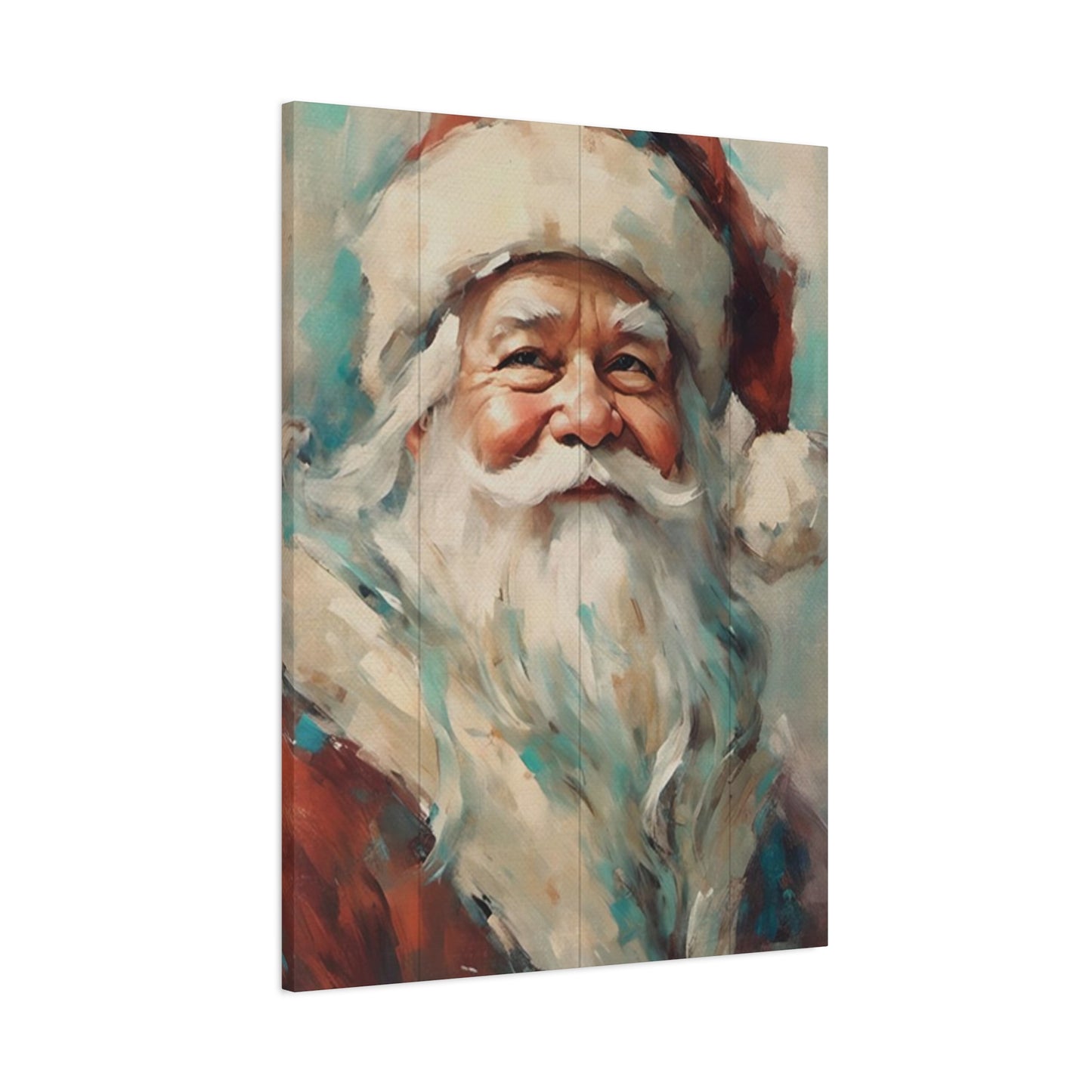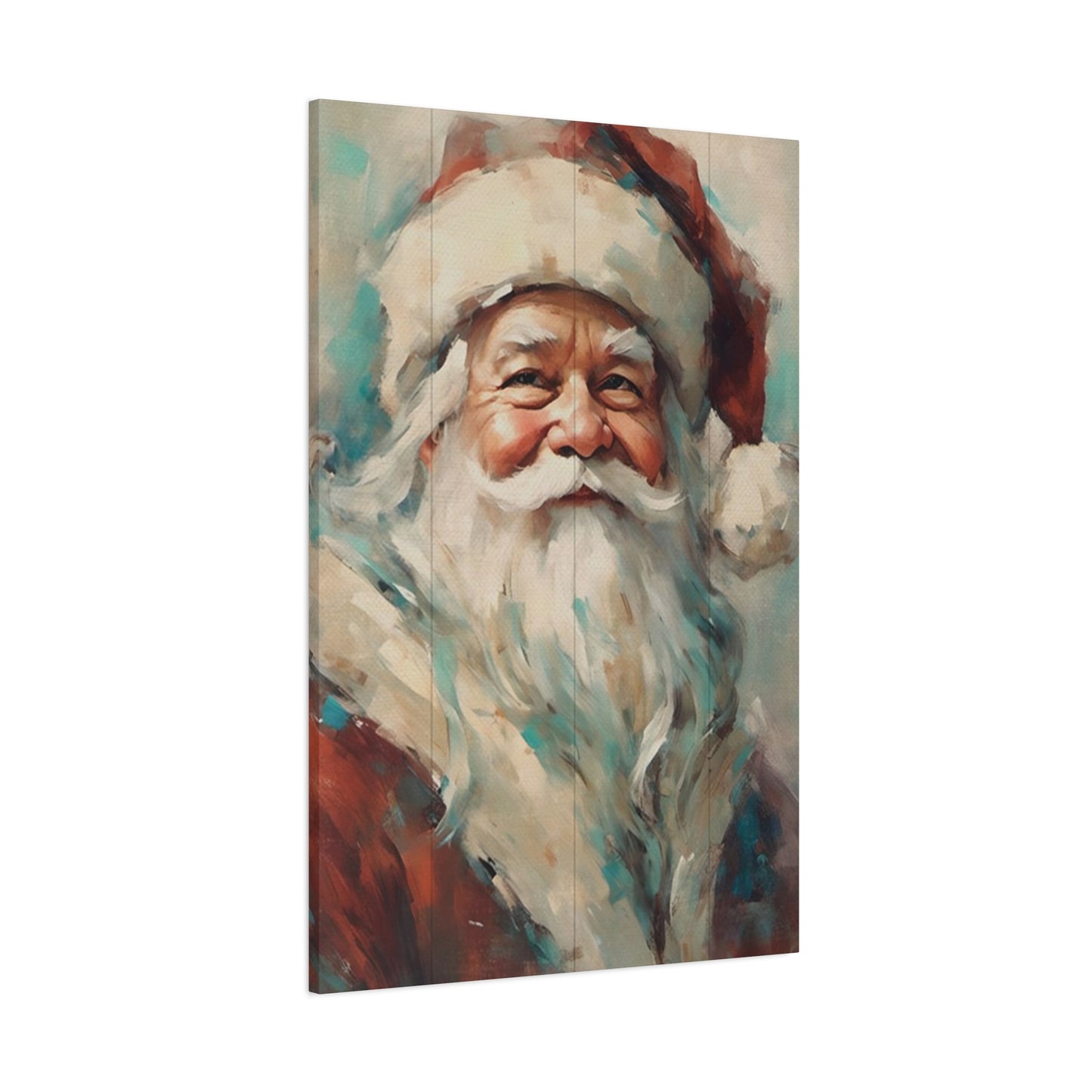Santa Claus Painting Wall Art Prints: The Ultimate Guide to Festive Home Decoration
The tradition of decorating homes with seasonal imagery has evolved dramatically over the centuries, transforming from simple handmade ornaments to sophisticated artistic expressions that capture the essence of celebration and joy. Among these decorative elements, festive holiday artwork featuring the beloved gift-giver has emerged as a timeless choice for homeowners seeking to infuse their living spaces with warmth, nostalgia, and seasonal cheer. These artistic representations serve multiple purposes beyond mere decoration, acting as conversation starters, memory triggers, and visual anchors that ground our celebration traditions in tangible form. The visual impact of these pieces extends far beyond their immediate aesthetic appeal, creating emotional connections that span generations and cultural boundaries. When we incorporate these artistic elements into our homes, we are participating in a centuries-old tradition of marking special seasons through visual storytelling and symbolic representation.
The psychological impact of surrounding ourselves with images that evoke positive emotions and cherished memories cannot be overstated. Research in environmental psychology has consistently demonstrated that our physical surroundings profoundly affect our mood, stress levels, and overall wellbeing. Artwork depicting cheerful seasonal themes creates an atmosphere of anticipation and celebration that can lift spirits during darker winter months. The presence of these visual reminders of festivity and generosity encourages us to embody these qualities in our daily lives, fostering a sense of community and connection with loved ones. Furthermore, these decorative pieces serve as visual anchors for family traditions, marking the passage of time and creating continuity across years and generations.
The artistic representation of holiday figures has undergone remarkable transformation throughout history, reflecting changing cultural values, artistic movements, and technological capabilities. Early depictions were often simple and symbolic, focusing on conveying spiritual or moral messages rather than achieving photographic realism. As artistic techniques evolved and printing technologies advanced, these representations became increasingly sophisticated and varied, encompassing everything from classical oil painting styles to contemporary abstract interpretations. This evolution mirrors broader trends in art history while maintaining connections to traditional iconography and symbolism that give these images their cultural resonance and emotional power.
The Historical Evolution of Holiday Character Portraiture in Visual Arts
The artistic tradition of depicting gift-bringing figures stretches back centuries, with roots in various European folk traditions and religious observances. These early representations were primarily found in religious manuscripts, church frescoes, and devotional paintings, where they served didactic purposes and helped communicate stories to largely illiterate populations. The imagery was rich with symbolism, using color, posture, and accompanying elements to convey complex theological and moral concepts. Red garments symbolized charity and sacrifice, while the evergreen elements represented eternal life and hope. These symbolic traditions have persisted even as the secular aspects of holiday celebrations have become more prominent in modern times.
The transformation of these religious figures into more secular holiday icons occurred gradually over several centuries, accelerating particularly during the nineteenth century as commercial printing made mass-produced images widely available. Artists began depicting these characters in more domestic settings, emphasizing their role as gift-givers and celebration facilitators rather than religious figures. This shift reflected broader cultural changes as industrialization and urbanization altered traditional celebration patterns and family structures. The Victorian era particularly embraced sentimental artistic representations that emphasized family togetherness, childhood innocence, and domestic comfort, themes that remain powerful in contemporary holiday imagery.
American illustrators of the late nineteenth and early twentieth centuries played a crucial role in standardizing the visual appearance of the holiday gift-giver as we know him today. Artists working for popular magazines and advertising campaigns created images that became deeply embedded in popular consciousness, establishing conventions that persist in contemporary artwork. These illustrations emphasized warmth, generosity, and a certain magical quality that appealed to both children and adults. The technical skill displayed in these works elevated them beyond mere commercial art, demonstrating sophisticated understanding of color theory, composition, and emotional storytelling through visual means.
Exploring Different Artistic Styles in Seasonal Decorative Artwork
The diversity of artistic approaches available in contemporary holiday artwork reflects both the rich history of the genre and the creative innovation of modern artists. Traditional realistic styles aim to create lifelike representations that could almost step out of the frame, using careful attention to detail, lighting, and texture to achieve convincing three-dimensional effects. These works often showcase remarkable technical skill, demonstrating mastery of color mixing, brushwork, and compositional balance. The realistic approach appeals to those who appreciate classical artistic values and seek artwork that feels timeless and substantial, capable of commanding attention in formal spaces while maintaining broad appeal across diverse tastes and ages.
Impressionistic interpretations take a different approach, sacrificing precise detail for emotional impact and atmospheric effects. These pieces use loose brushwork, vibrant color combinations, and suggestive rather than descriptive forms to capture the feeling and energy of the season rather than creating photographic accuracy. The impressionistic style brings a sense of movement and life to static images, making viewers feel they are witnessing a moment in time rather than viewing a posed portrait. This approach works particularly well for those seeking artwork that feels dynamic and emotionally resonant, creating mood and atmosphere rather than serving as precise representations.
Contemporary abstract approaches push even further from literal representation, using color, shape, and composition to evoke the essence of the season without depicting recognizable forms. These works might use traditional holiday colors in unexpected combinations, geometric patterns that suggest snow or ornaments, or bold compositional choices that create visual energy and interest. Abstract holiday artwork appeals to modern sensibilities and works well in spaces with contemporary design aesthetics, proving that seasonal decoration need not be traditional in style to be effective in creating festive atmosphere. These pieces often serve as striking focal points that generate conversation and demonstrate the homeowner's sophisticated artistic sensibilities.
Vintage and retro styles deliberately evoke earlier eras, recreating the color palettes, compositional approaches, and stylistic conventions of specific historical periods. These nostalgic works appeal to our collective memory and longing for simpler times, whether we actually experienced those eras or not. The slightly faded colors, simplified forms, and deliberate imperfections of vintage-style artwork create feelings of warmth and familiarity that newer, more polished pieces sometimes lack. This style has enjoyed renewed popularity as people seek to create spaces that feel authentically personal and connected to history rather than following fleeting contemporary trends.
High-Quality Reproduction Methods
The reproduction quality of artwork significantly impacts both its visual appeal and longevity, making production methods an important consideration when selecting decorative pieces. Modern printing technologies have revolutionized the accessibility of high-quality artwork, making it possible to own museum-quality reproductions at reasonable prices. Giclée printing represents the gold standard in reproduction techniques, using specialized archival inks and high-resolution printing processes to create images that rival original paintings in color accuracy, detail, and longevity. These prints can last for decades or even centuries when properly displayed and maintained, making them genuine investments in home decoration rather than temporary disposals.
The substrate material chosen for printing dramatically affects the final appearance and tactile quality of the artwork. Premium materials provide superior color saturation, detail resolution, and texture that enhance the viewing experience and contribute to the perceived value of the piece. Heavy-weight materials resist warping and maintain their appearance over time, while specialized coatings protect against fading, moisture damage, and other environmental factors that can degrade lesser quality reproductions. The investment in superior materials pays dividends through enhanced visual impact and extended lifespan, allowing pieces to become cherished elements of home decoration that can be enjoyed year after year.
Stretching and mounting techniques also significantly impact the final presentation and durability of artwork. Gallery-wrapped mounting, where the image continues around the edges of the frame, creates a modern, polished appearance that works well in contemporary spaces. This technique eliminates the need for separate framing, simplifying installation while creating clean, professional presentation. Traditional mounting with visible edges allows for more framing options and can create a more formal appearance appropriate for traditional or transitional spaces. Understanding these technical aspects helps consumers make informed decisions that align with their aesthetic preferences and practical requirements.
Selecting Appropriate Dimensions for Maximum Visual Impact
The size of artwork dramatically influences its impact within a space, making dimension selection a critical consideration in creating effective room decoration. Large-scale pieces command attention and serve as focal points around which other design elements orbit. These statement pieces work particularly well above mantels, in dining rooms, or as the centerpiece of living room arrangements, where their presence can anchor the entire space and set the tone for seasonal decoration. However, large artwork requires adequate wall space and appropriate viewing distance to be fully appreciated; cramming oversized pieces into small spaces creates visual overwhelm rather than pleasing impact.
Medium-sized pieces offer versatility and work well in various locations throughout the home. These dimensions suit bedroom walls, hallway arrangements, and smaller gathering spaces where impact is desired without overwhelming the environment. Multiple medium pieces can be arranged in gallery walls or grouped compositions that create visual interest through repetition and variation. This approach allows for more complex storytelling and provides opportunities to mix different but complementary images that work together to create cohesive seasonal atmosphere. The flexibility of medium dimensions makes them popular choices for those building collections that can evolve and be rearranged over time.
Smaller artwork serves different purposes, working well in intimate spaces, as part of larger arrangements, or in areas where subtle seasonal touches are preferred over bold statements. These pieces excel on bookshelf vignettes, bathroom walls, office spaces, and other locations where full-scale holiday decoration might feel excessive. Small pieces also allow for budget-conscious collection building, enabling homeowners to gradually accumulate a diverse array of seasonal artwork that can be displayed throughout the home. The cumulative effect of multiple smaller pieces can equal or exceed the impact of a single large work while providing more flexibility in arrangement and display options.
Understanding Color Theory in Holiday Themed Artwork Selection
Color plays a fundamental role in the emotional and aesthetic impact of artwork, making color selection a crucial consideration when choosing pieces for your home. Traditional holiday color schemes centered on rich reds and deep greens create immediate associations with celebration and tradition, tapping into deeply embedded cultural connections that span generations. These classic combinations work particularly well in traditional or transitional spaces where they complement wood tones, warm metallics, and classic furnishing styles. The psychological impact of these colors is well-documented, with red stimulating energy and excitement while green provides balance and connection to nature.
Contemporary color approaches expand beyond traditional palettes to include sophisticated combinations that appeal to modern sensibilities. Icy blues and silvers create cool, elegant atmospheres that work beautifully in spaces with contemporary or coastal design aesthetics. These cooler tones suggest winter wonderlands and frozen landscapes, evoking the season through association rather than traditional symbolism. The use of metallic accents in gold, copper, or silver adds luxury and visual interest while maintaining seasonal appropriateness. These expanded color options allow for personalized expression that reflects individual taste rather than conforming to expected conventions.
Neutral and muted color schemes offer sophisticated alternatives for those preferring subtle seasonal decoration. Artwork featuring soft creams, warm grays, and gentle earth tones can evoke holiday feelings without the bold color statements of traditional pieces. These subtle approaches work particularly well in minimalist or Scandinavian-inspired spaces where restraint and simplicity are valued design principles. The seasonal nature of such pieces comes through compositional elements, subject matter, and subtle color choices rather than obvious holiday imagery, allowing them to remain displayed throughout winter months without feeling overly specific to particular celebrations.
Integrating Festive Artwork Into Various Interior Design Styles
Successfully incorporating seasonal artwork into existing design schemes requires understanding how different aesthetic approaches can be harmonized. Traditional interiors with classic furnishings, rich wood tones, and formal arrangements naturally accommodate artwork with realistic styles, traditional color palettes, and substantial frames. These spaces benefit from pieces that echo the weight and presence of surrounding furnishings, creating cohesive environments where new additions feel intentional rather than haphazard. The key is maintaining consistency in color temperature, level of detail, and overall formality so that seasonal pieces enhance rather than clash with permanent design elements.
Modern and contemporary spaces present different challenges and opportunities for artwork integration. Clean lines, minimal ornamentation, and neutral color schemes provide blank canvases that can dramatically showcase bold artistic statements. Contemporary holiday artwork with abstract elements, unexpected color combinations, or innovative compositions can serve as seasonal focal points that energize minimalist spaces without cluttering them. The key is selecting pieces that respect the restraint and intentionality of modern design while providing the warmth and personality that purely minimal spaces sometimes lack. Frameless mounting options and clean presentation techniques help maintain the sleek aesthetic while incorporating seasonal personality.
Farmhouse and rustic design aesthetics emphasize natural materials, vintage elements, and casual comfort, creating environments where artwork with distressed finishes, vintage styling, or folk art influences feels naturally at home. These spaces benefit from pieces that appear collected over time rather than carefully coordinated, allowing for mixing of styles, ages, and sources that would feel chaotic in more formal settings. The relaxed nature of farmhouse design permits creative freedom in artwork selection, encouraging personal expression and meaningful collections over design perfection. Vintage-inspired holiday artwork particularly shines in these environments, where imperfections and worn qualities are valued rather than hidden.
Creating Gallery Wall Arrangements With Seasonal Themes
Gallery walls represent sophisticated design solutions that maximize visual impact while allowing for creative expression and personal storytelling. These curated arrangements transform individual pieces into cohesive compositions that command attention and create focal points within rooms. The key to successful gallery walls lies in thoughtful planning that balances unity and variety, creating enough consistency to feel intentional while incorporating sufficient diversity to maintain visual interest. Color palette consistency, theme coherence, and frame coordination help unify disparate elements while varied sizes, styles, and compositions prevent monotony.
Planning gallery wall layouts requires consideration of both individual pieces and overall composition. Starting with the largest or most important piece and building around it provides a strong foundation and ensures the central element receives appropriate emphasis. Maintaining relatively consistent spacing between pieces creates professional appearance and prevents the arrangement from feeling cluttered or chaotic. Many designers recommend laying out the entire arrangement on the floor or using paper templates on the wall before committing to nail holes, allowing for adjustment and refinement without permanent consequences. This planning phase, though time-consuming, dramatically increases the likelihood of achieving satisfying results.
Seasonal gallery walls offer unique opportunities because they can be changed with the calendar, keeping spaces feeling fresh and current throughout the year. Creating modular arrangements where holiday pieces can be swapped in and out of established layouts allows for seasonal variation without requiring complete redesign. Some homeowners maintain multiple gallery wall configurations optimized for different seasons, storing pieces carefully when not displayed and rotating them systematically throughout the year. This approach maximizes the value of artwork collections while preventing any single arrangement from becoming stale through year-round display. The anticipation and ritual of changing seasonal displays itself becomes part of holiday tradition.
Proper Display Techniques for Canvas Mounted Artwork
The proper display of artwork significantly impacts both its appearance and longevity, making installation technique an important consideration. Wall preparation begins with selecting appropriate locations that protect pieces from direct sunlight, excessive moisture, and extreme temperature fluctuations, all of which can degrade materials and fade colors over time. Even high-quality archival prints will deteriorate if exposed to harsh environmental conditions, so thoughtful placement that balances visual impact with preservation concerns is essential. Rooms with controlled environments, indirect natural light, and stable humidity levels provide ideal conditions for displaying valuable pieces.
Hanging hardware selection depends on both the weight of the piece and the composition of your walls. Substantial pieces require secure mounting systems that distribute weight appropriately and prevent accidents. Many modern pieces come with integrated hanging systems that simplify installation, but understanding proper technique remains important for achieving level, secure mounting. Using appropriate wall anchors for drywall installations prevents damage and ensures pieces remain safely mounted for years. Taking time to properly level pieces during installation creates professional appearance and prevents the visual distraction of crooked artwork.
Lighting considerations dramatically affect how artwork is perceived and appreciated. Dedicated picture lights can illuminate pieces dramatically, creating focal points and allowing artwork to shine even in dimly lit spaces. However, any lighting directed at artwork should be LED-based to minimize heat and UV exposure that can damage materials. Ambient room lighting should be considered when placing artwork, ensuring pieces receive adequate illumination during typical use while avoiding glare that makes viewing difficult. Strategic placement relative to windows and artificial light sources maximizes visibility while protecting against damage.
Nostalgic Imagery in Home Decoration
The emotional power of nostalgic imagery stems from its ability to connect present experiences with cherished memories and idealized pasts. When we surround ourselves with images that evoke childhood wonder, family traditions, and simpler times, we create emotional anchors that provide comfort and stability in an often chaotic world. This psychological phenomenon explains the enduring popularity of traditional holiday imagery even as artistic styles and cultural values evolve. The familiar scenes trigger cascade of associations and memories that extend far beyond the literal content of the images, tapping into deep wells of emotion and meaning.
Nostalgia serves important psychological functions, helping us maintain continuity of identity across time and providing perspective on current challenges. Research suggests that nostalgic remembering increases feelings of social connectedness, boosts self-esteem, and provides meaning and purpose. By deliberately incorporating nostalgic elements into our environments, we can harness these psychological benefits, creating spaces that actively support mental health and emotional wellbeing. The seasonal nature of certain nostalgic imagery intensifies its impact, as annual encounters with familiar images become anticipated rituals that mark time's passage and connect us with ongoing traditions.
The universal nature of certain nostalgic themes allows mass-produced imagery to feel personally meaningful across diverse audiences. While specific memories and associations vary individually, common human experiences of childhood wonder, family celebration, and seasonal change create shared frameworks that give widely distributed images broad emotional resonance. This explains how commercial artwork can feel personally significant and emotionally powerful despite being owned by thousands of others. The general evocative power of the imagery combines with each viewer's unique memories and associations to create experiences that feel genuinely personal.
Building Comprehensive Seasonal Artwork Collections Over Time
Developing a meaningful collection of seasonal artwork represents an investment in home decoration that pays dividends through years of enjoyment and aesthetic pleasure. Rather than attempting to complete collections overnight, many homeowners find greater satisfaction in gradual accumulation that allows for thoughtful selection and financial flexibility. This measured approach enables collectors to live with pieces before committing to additional purchases, ensuring each new addition truly enhances the collection and works well within intended spaces. The anticipation and hunt for perfect pieces itself becomes an enjoyable aspect of the collecting experience.
Thematic coherence helps collections feel intentional and curated rather than random accumulations. Collectors might focus on particular artistic styles, specific color palettes, certain time periods, or recurring subjects that resonate personally. This thematic discipline provides direction during acquisition while allowing sufficient flexibility to accommodate unexpected discoveries and evolving tastes. However, excessive rigidity can limit opportunities and create collections that feel monotonous, so maintaining balance between consistency and variety proves important. The most engaging collections display clear vision while incorporating sufficient diversity to maintain interest.
Proper storage and maintenance protect collections during off-season periods and ensure pieces remain in excellent condition for years of enjoyment. Climate-controlled storage protects artwork from humidity, temperature extremes, and pest damage that can occur in basements, attics, or garages. Wrapping pieces individually prevents scratching and physical damage while making them easy to identify during rotation. Maintaining inventory lists with photographs helps track collections and plan displays, particularly as collections grow. These organizational systems transform collections from potential burdens into manageable resources that enhance homes without creating stress.
The Environmental Considerations of Contemporary Art Production
Modern consumers increasingly consider environmental impacts when making purchasing decisions, including home decoration choices. The art production industry has responded with more sustainable practices and eco-friendly materials that allow environmentally conscious consumers to decorate beautifully while aligning purchases with values. Water-based inks, recycled substrates, and sustainable forestry products minimize environmental footprints without compromising quality or appearance. These eco-friendly options sometimes cost slightly more than conventional alternatives, but many consumers find the premium worthwhile for peace of mind and reduced environmental impact.
The longevity of high-quality artwork represents another important environmental consideration. Pieces created with archival materials and proper construction techniques remain beautiful and functional for decades, eliminating the need for frequent replacement that generates waste and consumes resources. This durability transforms artwork from disposable decoration into long-term investment that actually reduces environmental impact over time compared to frequently replaced lower-quality alternatives. The ability to enjoy beautiful artwork for years without degradation provides both economic and environmental benefits that justify initial investment in superior quality.
Local and regional artists often offer environmental advantages through reduced transportation impacts and support for local economies. Seeking out artists from your area or region minimizes shipping distances and associated carbon emissions while supporting your community and potentially establishing meaningful connections with creators. Many regions have vibrant artistic communities producing excellent work that rivals or exceeds mass-produced alternatives in quality and originality. Exploring local art shows, studios, and galleries can yield unique discoveries while providing environmental and community benefits that enhance the satisfaction of ownership.
Personalizing Spaces With Custom and Commissioned Artwork
While mass-produced artwork serves many needs effectively, custom and commissioned pieces offer unique opportunities for personal expression and meaningful decoration. Working directly with artists allows precise specification of dimensions, color palettes, stylistic approaches, and subject matter to create pieces perfectly suited to particular spaces and personal preferences. This customization ensures artwork integrates seamlessly into existing design schemes and reflects individual taste rather than broad market trends. The collaborative creative process itself can be rewarding, providing insight into artistic practice and establishing personal connections with creators.
Family photographs transformed into artistic interpretations create deeply meaningful decoration that combines personal history with aesthetic appeal. Artists can work from photographic references to create paintings, drawings, or digital artwork that captures cherished moments and beloved individuals in artistic styles ranging from realistic portraiture to whimsical caricature. These personalized pieces become family heirlooms with emotional value far exceeding their material cost, marking important relationships and memories in permanent, beautiful form. Many families commission new pieces annually or for special occasions, gradually building collections that chronicle family history through artistic interpretation.
Pet portraits and other subject matter specific to household occupants allow for truly unique decoration impossible to achieve through mass-produced alternatives. Artists specializing in animal portraiture can capture the personality and distinctive characteristics of beloved pets in styles ranging from formal oil paintings to playful modern illustrations. Similarly, artists can create custom pieces incorporating specific locations, hobbies, interests, or other elements meaningful to household members. These personalized touches transform houses into homes by filling them with imagery that reflects the specific people living there rather than generic decorative content.
Understanding Investment Value in Decorative Artwork
While most decorative artwork should be purchased primarily for personal enjoyment rather than financial speculation, understanding value considerations helps make informed acquisition decisions. Limited edition pieces with established scarcity often maintain or appreciate in value more reliably than open edition reproductions, particularly when created by artists with significant followings or established reputations. Certificates of authenticity, edition numbering, and artist signatures all contribute to perceived and actual value, making these elements worth considering even when purchasing primarily for decoration rather than investment.
Artist reputation significantly influences both current market value and appreciation potential. Works by recognized artists with established followings and consistent output tend to hold value more reliably than pieces by unknown creators, though exceptional quality can eventually establish previously unknown artists' reputations. Researching artists before significant purchases provides context about their background, training, exhibition history, and market position. This information helps assess whether current pricing seems reasonable and whether the artist's trajectory suggests potential appreciation. However, even works by lesser-known artists can prove valuable if they provide genuine aesthetic pleasure and personal meaning.
Condition maintenance critically affects artwork value over time. Pieces kept in excellent condition through proper display, storage, and handling retain significantly more value than damaged or degraded examples. Investing in appropriate framing, UV-protective glass, and professional conservation when needed protects both aesthetic quality and financial value. Documentation including original sales receipts, certificates of authenticity, artist statements, and exhibition records should be carefully preserved as they substantially impact resale value. These practices apply whether artwork was purchased as investment or pure decoration, as circumstances change and pieces initially bought for personal enjoyment sometimes later enter the market.
The Cultural Significance of Gift-Bringer Imagery Across Societies
While specific traditions and imagery vary across cultures, nearly every society has developed customs around seasonal gift-giving and figures who facilitate these exchanges. These traditions reflect universal human needs for celebration, generosity, and marking important seasonal transitions. Understanding the diversity of global gift-bringer traditions enriches appreciation for familiar imagery while revealing fascinating cultural variations on common themes. European traditions alone include dozens of regional figures with distinctive characteristics, customs, and associated imagery, each reflecting local history and values.
The American interpretation of holiday gift-bringer imagery represents a synthesis of multiple European traditions filtered through particular historical and commercial circumstances. This unique amalgamation drew from Dutch, German, English, and other cultural sources to create something distinctly American while maintaining connections to older traditions. The standardization of appearance and mythology occurred largely through commercial illustration and advertising in the late nineteenth and early twentieth centuries, demonstrating commerce's powerful role in shaping cultural imagery. This commercial origin doesn't diminish the genuine meaning and emotional power these images hold for millions of people worldwide.
Contemporary global culture has seen widespread adoption of certain imagery beyond its original cultural contexts, sometimes sparking interesting hybrids and adaptations. Countries with no historical connection to particular traditions have adopted elements for commercial or entertainment purposes, often blending them with local customs to create unique variations. This globalization of imagery demonstrates both the universal appeal of certain archetypal figures and the flexibility of cultural traditions to adapt and evolve. Artistic representations increasingly reflect this global diversity, incorporating varied cultural elements and perspectives into holiday themed artwork.
Incorporating Metallic Elements and Specialty Finishes
Metallic accents and specialty finishes add luxury and visual interest to artwork while maintaining seasonal appropriateness. Gold leaf or metallic gold paint creates warmth and elegance that enhances traditional imagery while working beautifully in formal spaces. The way metallic elements catch and reflect light creates dynamic visual experiences that change with viewing angle and lighting conditions, adding dimensionality and life to static images. These premium finishing techniques significantly increase production costs but create distinctive pieces that command attention and feel genuinely special.
Silver and platinum tones offer cooler alternatives that work particularly well with winter themes and contemporary color schemes. These metallic cool tones suggest snow, frost, and ice while providing the visual interest and luxury of precious metals. When combined with deep blues, purples, or dramatic blacks, silver elements create sophisticated, modern appearances that appeal to contemporary sensibilities while maintaining seasonal relevance. The reflective quality of these metallic finishes helps artwork maintain presence even in low light conditions, ensuring pieces remain visible and impactful during long winter evenings.
Specialty finishing techniques including varnishes, glazes, and textural elements add depth and character to printed artwork, helping reproductions approximate the look and feel of original paintings. Gel mediums applied to specific areas can create raised texture that mimics brush strokes and paint application, adding tactile dimension to otherwise flat prints. These finishing touches dramatically enhance perceived quality and value while increasing visual interest and authenticity. Some collectors consider properly finished high-quality reproductions superior to mediocre original artwork, as technical excellence and visual impact matter more than whether pieces were created by hand or through mechanical reproduction.
Exploring Whimsical and Humorous Interpretations
While traditional dignified imagery maintains enduring popularity, whimsical and humorous interpretations offer refreshing alternatives that inject personality and fun into seasonal decoration. These playful pieces often feature unexpected scenarios, amusing character interactions, or gentle satire that makes viewers smile while maintaining seasonal appropriateness. Humorous artwork works particularly well in informal spaces like family rooms, kitchens, and children's areas where lighthearted decoration feels natural and appropriate. These pieces demonstrate that seasonal celebration need not be entirely solemn or serious, embracing joy and laughter as legitimate aspects of holiday experience.
Contemporary artists have created remarkable diverse interpretations that reimagine traditional figures in unexpected contexts or styles. These creative reimaginings might place familiar characters in modern settings, depict them engaging in contemporary activities, or render them in artistic styles that create intentional incongruity. Such creative interpretations appeal to sophisticated audiences who appreciate traditional imagery but seek fresh perspectives and original thinking. These pieces spark conversation and demonstrate personal style while maintaining connections to beloved traditions, achieving balance between innovation and familiarity.
Children particularly respond to whimsical interpretations that emphasize fun and fantasy over realism and tradition. Cartoon styles, bright colors, and imaginative scenarios capture young imaginations and create artwork children genuinely enjoy rather than merely tolerate as adult decoration. Including artwork specifically selected to appeal to children acknowledges their legitimate stake in family spaces and seasonal celebrations while creating decoration that truly resonates with all household members. These child-friendly pieces needn't be aesthetically sophisticated to serve important functions in creating inclusive, welcoming homes.
Technical Considerations for Bathroom and Kitchen Displays
Displaying artwork in bathrooms and kitchens requires special considerations due to moisture, temperature fluctuations, and functional demands of these spaces. High humidity environments gradually damage most artwork materials, particularly paper-based pieces and those with water-soluble elements. Canvas prints treated with water-resistant coatings and sealed properly can withstand bathroom conditions better than many alternatives, though even these should not be placed directly in shower spray zones. Ensuring adequate ventilation through exhaust fans minimizes moisture exposure and protects artwork along with other vulnerable materials.
Kitchen environments present different challenges including cooking vapors, temperature variations, and potential splatter from food preparation. Artwork placed near cooking surfaces should be easily cleanable and resistant to grease accumulation. Glass or acrylic fronts protect pieces while allowing easy cleaning, making framed options practical for kitchen display. Alternatively, canvas pieces can be positioned away from direct cooking areas where they add warmth and personality without exposure to problematic conditions. The investment in appropriate protection and thoughtful placement allows enjoyment of beautiful artwork even in challenging environments.
Subject matter selection for kitchen and bathroom displays might differ from other areas, emphasizing cheerful, whimsical, or folk art styles that suit the informal nature of these functional spaces. Traditional formal artwork can feel incongruous in rooms dedicated to practical activities, while playful or casual pieces enhance rather than conflict with room functions. Some homeowners prefer rotating smaller, less expensive pieces through these challenging environments, accepting that eventual replacement will be needed rather than investing in expensive works for areas where longevity concerns are legitimate.
Preserving and Maintaining Artwork Quality Long-Term
Proper maintenance ensures artwork remains beautiful and valuable for decades, protecting both aesthetic and financial investment. Regular gentle dusting with soft, clean cloths prevents accumulation of particles that can abrade surfaces or be drawn into canvas texture where they become difficult to remove. Avoid household cleaners, water, or any wet cleaning methods unless specifically recommended by manufacturers, as moisture can damage canvas, loosen adhesives, or cause other problems. When deeper cleaning becomes necessary, consulting professional conservators prevents well-intentioned but destructive amateur interventions.
Environmental monitoring helps identify and address conditions that threaten artwork before serious damage occurs. Excessive humidity promotes mold growth and causes materials to warp or deteriorate, while excessive dryness can make materials brittle and prone to cracking. Maintaining relative humidity between forty and sixty percent protects most artwork materials, though specific pieces may have different requirements. Temperature stability matters as much as specific temperatures, as repeated expansion and contraction from temperature cycling stresses materials and accelerates degradation. Digital monitors make tracking these conditions affordable and easy, allowing prompt intervention when problems develop.
Professional conservation becomes necessary when damage occurs or preventive treatment is needed for particularly valuable pieces. Qualified conservators have training and experience to properly address various types of damage and deterioration without causing additional problems. They can also advise on preventive measures, appropriate display conditions, and proper handling techniques specific to particular pieces. While conservation services represent significant expense, they prove worthwhile for genuinely valuable pieces where proper treatment means difference between preservation and loss. For less valuable pieces, replacement may be more economical than professional conservation.
Creating Cohesive Seasonal Themes Throughout Entire Homes
Achieving cohesive seasonal decoration throughout entire homes requires thoughtful planning that balances unity and variety. Selecting a core color palette that appears in different proportions and combinations throughout various spaces creates visual continuity while allowing room-specific variation. This approach prevents homes from feeling like disconnected collections of individual rooms while avoiding monotonous repetition that results from using identical decoration everywhere. The consistent elements provide subliminal coherence that makes spaces feel intentionally designed rather than haphazardly decorated.
Varying the scale and intensity of seasonal decoration by room creates natural hierarchy that guides attention and prevents overwhelming sensory experiences. Primary gathering spaces like living rooms and dining rooms typically receive the most elaborate decoration, establishing these areas as celebration focal points. Secondary spaces including hallways, bathrooms, and bedrooms receive lighter treatment that acknowledges the season without competing with principal areas. This graduated approach creates homes that feel festively decorated without every surface being covered in seasonal items, maintaining sophistication and preventing visual fatigue.
Personal and family-specific elements scattered throughout seasonal decoration transform generic celebration into meaningful personal expression. Incorporating treasured ornaments, meaningful artwork, cherished decorations from childhood, and pieces with family history creates emotional depth that purely commercial decoration lacks. These personal elements need not match perfectly with other decoration to serve their purpose; indeed, the slight aesthetic friction created by genuinely meaningful pieces often adds character and authenticity that too-perfect coordination cannot achieve. The goal is creating environments that reflect the specific people living there rather than looking like showrooms or magazine spreads.
Strategies for Building Artwork Collections
Building impressive artwork collections need not require unlimited budgets when approached strategically and patiently. Shopping during post-holiday sales allows acquisition of quality pieces at substantial discounts, as retailers clear inventory to make room for new collections. These seasonal cycles make timing purchases carefully a simple way to stretch budgets without compromising quality. Similarly, online retailers often offer promotional codes and periodic sales that reduce prices significantly. Subscribing to mailing lists and following preferred retailers on social media ensures awareness of these opportunities.
Mixing investment pieces with more affordable options allows creation of impressive displays without breaking budgets. Investing in one or two substantial, high-quality pieces as focal points and surrounding them with more modestly priced complementary pieces creates impact exceeding what purchasing many pieces at moderate price points would achieve. This strategy acknowledges that not all elements of an arrangement need equal visual weight or construction quality to contribute effectively to overall impact. The high-quality anchor pieces establish credibility and aesthetic standards that elevate surrounding less expensive elements.
Creating DIY pieces or commissioning local emerging artists provides affordable originality impossible to achieve through commercial channels. Many art schools, online platforms, and local galleries feature emerging artists offering original work at reasonable prices, motivated by desire to establish reputations and build portfolios. Similarly, craft fairs and artisan markets often feature handmade items at prices competitive with mass-produced alternatives. These sources provide opportunities to acquire unique, original pieces while supporting artists and craftspeople, adding stories and connections that enhance ownership satisfaction beyond pure aesthetic considerations.
Understanding the Relationship Between Artwork and Room Architecture
Architectural features significantly influence how artwork is perceived and how effectively it integrates into spaces. High ceilings allow for dramatic vertical arrangements and oversized pieces that would overwhelm rooms with standard ceiling heights. Taking advantage of vertical space through tall pieces or stacked arrangements creates impressive displays that complement rather than fight against architectural features. Conversely, rooms with lower ceilings benefit from horizontal arrangements and moderately sized pieces that respect spatial constraints rather than attempting to visually exceed them.
Wall color and texture interact with artwork in ways that dramatically affect final appearance. Artwork with significant white or light backgrounds can disappear against white walls, while dark pieces may lack sufficient contrast against deeply colored walls. Considering these interactions during piece selection or being willing to adjust wall colors to better showcase important artwork ensures investment pieces achieve maximum impact. Textured walls including brick, stone, or heavily textured plaster create complications for hanging while adding visual interest that can compete with or complement artwork depending on specifics.
Architectural elements including windows, doors, built-ins, and other features must be worked with rather than against when planning artwork placement. Centering pieces on walls without considering these interruptions often results in awkward, unbalanced arrangements. Treating architectural features as immovable components of arrangements and planning around them creates more successful results than attempting to ignore or fight against them. Sometimes architectural constraints that initially seem limiting actually provide useful structure that guides arrangement decisions and prevents the paralysis of unlimited options.
Conclusion
Santa Claus Painting Wall Art Prints: The Ultimate Guide to Festive Home Decoration illustrates the extraordinary role that holiday-themed art plays in transforming living spaces. Santa Claus, as an enduring symbol of generosity, joy, and the magic of Christmas, offers more than seasonal decoration — he embodies emotion, tradition, and aesthetic charm. By incorporating Santa-themed paintings or prints into homes, families and design enthusiasts can create environments that celebrate the festive season while elevating the overall interior design, blending warmth, visual appeal, and cultural storytelling.
At its core, Santa Claus wall art brings both nostalgia and wonder. These artworks capture the familiar figure of Father Christmas in ways that resonate emotionally, invoking memories of childhood anticipation, festive gatherings, and the joy of giving. Artists use a variety of styles — from classic realism with detailed brushwork to contemporary digital or abstract interpretations — allowing homeowners to select pieces that reflect their personal taste and holiday vision. Whether portraying Santa delivering gifts, reading by the fireplace, or engaging with whimsical scenes, each artwork tells a story, inviting viewers to connect with the season on both an aesthetic and emotional level.
From a design perspective, Santa-themed painting prints offer unmatched versatility. Their color palette — typically featuring reds, whites, greens, golds, and muted winter tones — complements a variety of interiors, enhancing both traditional and modern décor. Large-scale canvases can serve as statement pieces above mantels or sofas, immediately drawing attention and establishing a festive atmosphere. Smaller prints can be grouped to create curated holiday galleries or paired with decorative accents such as wreaths, garlands, and ornaments to create visual cohesion. The adaptability of Santa Claus artwork ensures it enhances interiors of all sizes and styles, from cozy apartments to spacious living rooms.
Lighting plays a crucial role in highlighting the charm of these artworks. Soft ambient lighting or strategically placed accent lights enhance the textures, brushwork, and color vibrancy of the pieces, creating depth and warmth. Twinkling holiday lights nearby can further complement the festive imagery, producing a layered visual effect that immerses viewers in the Christmas spirit. The interplay of light and artwork transforms a simple wall into a celebratory focal point that engages both sight and emotion.
Beyond aesthetic appeal, Santa Claus wall art carries cultural and emotional significance. Santa is universally recognized as a symbol of generosity, kindness, and celebration, bridging traditions across generations and communities. Displaying his image in the home reinforces these values, encouraging reflection on the joy of giving, togetherness, and shared celebration. The presence of Santa-themed art fosters connection, nostalgia, and a sense of anticipation, making everyday living spaces feel more inviting and emotionally enriched during the holiday season.
Artists often bring unique interpretations to Santa Claus painting prints, balancing realism with storytelling. Some focus on intricate details, emphasizing textures, facial expressions, and festive environments, while others highlight stylized forms, vibrant colors, or whimsical scenes that amplify the playful spirit of Christmas. These variations ensure that the artwork remains versatile, appealing to traditionalists and contemporary design enthusiasts alike, and capable of harmonizing with a wide range of home décor styles.
Ultimately, Santa Claus Painting Wall Art Prints are more than decorative accents; they are powerful tools for creating festive ambiance and emotional resonance. They transform walls into narratives of holiday magic, blending color, light, and story to create spaces that celebrate warmth, joy, and family tradition. The artworks inspire imagination, invite nostalgia, and turn interiors into immersive seasonal experiences, providing both visual delight and emotional enrichment.
In conclusion, incorporating Santa Claus painting wall art into your home is a celebration of creativity, tradition, and festive spirit. Each piece serves as a visual anchor for the holiday season, transforming interiors into spaces filled with cheer, warmth, and timeless charm. From subtle prints to bold canvases, these artworks offer both aesthetic sophistication and emotional depth, ensuring that every corner of your home reflects the magic, generosity, and joy that define Christmas. By thoughtfully selecting, displaying, and lighting Santa Claus art, homeowners create not only beautiful interiors but lasting memories, making each holiday season more vibrant, heartwarming, and visually enchanting.

















